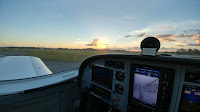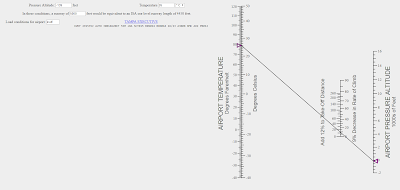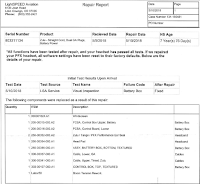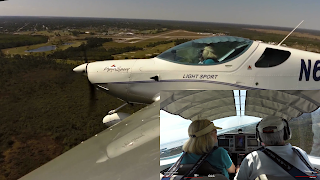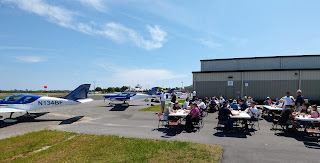- If the plane is broken, don't fly it.
- If the weather is lousy don't fly in it
- If the weather changes, change your plans
- If the pilot shouldn't fly, don't.
- IMSAFE
- If you or your passenger are sick, land
- Set a "bingo" fuel quantity and land when you reach it.
- Know your emergency procedures and be prepared to execute them at any time.
- Know your limitations.
I spoke with one of the pilots involved in the accident and he provided insight as to what occurred. There was a bird strike at 2,500' on the underside of the engine, there were no feathers and only one of the pilots saw the bird, but the thump was heard and felt by both. Loss of fuel pressure and engine was out within 1.5 minutes of impact. He states that immediately upon the engine going out they both went into automatic mode, relying on their emergency training and not panicking at all. Radio set to 121.5, emergency declared to ATC, transponder set to 7700, adjusting belts to a tighter feel, unlocking the canopy as they were coming in for landing on the road. The road they had chosen had power lines running parallel to the road.....the ONE unexpected surprise was when they both realized there was a power line running across the road. That's the last he recalls as next thing he remembers was being tumbled around after hitting a stop sign, fence and finally resting in the trees. He is grateful that they hit a few things on the way down as each impact deflected energy.
The parachute lines, that are visible in the picture, are not from a deployment but actually from the separation of the front part (firewall forward) of the SC.
As of today, he is still hobbling around as his ankles are still swollen and the body aching from the impact. As for the other pilot, he's still in the hospital sedated and on a respirator. A bleed was identified at the scene and the doctors are trying to control said bleed and reducing the swelling of the brain.
-Izzy (reference)Another local accident occurred over the holiday break,
"I was walking toward my yard, and I heard what sounded like someone kicking over a garbage can," said Mary Ellen Race.
She said the plane clipped a tree, then come to rest at the corner of Papaya Drive and Sailfish Court. Race and her husband immediately checked on the pilot to see if he was OK.
"The pilot was still sitting in the plane, I went over and asked him are you hurt anywhere, do you have any chest pains, he said no I have great harnesses, I'm not hurt at all," said Ralph Race.
Race says the pilot told them the plane lost power and he tried to glide the aircraft into the Punta Gorda Airport, which is a mile from the neighborhood.
No one else was on the Piper Sport series plane, and no one on the ground was hurt.And finally, tragically another LSA crashed nearby.
LAKELAND — A student pilot died Saturday morning after his plane crashed on his third touch-and-go landing at Lakeland Linder International Airport.
According to Lakeland Police reports, Gary Alan Mansell, 64, of 3316 Ranchdale Drive, Plant City, was doing touch-and-go landings at the airport at 10:12 a.m. when his plane took a hard left and crashed into the ground, bursting into flames.The investigations are still being completed. It can happen to you so be prepared. Training could make a difference.
Reference: Oil Pressure








